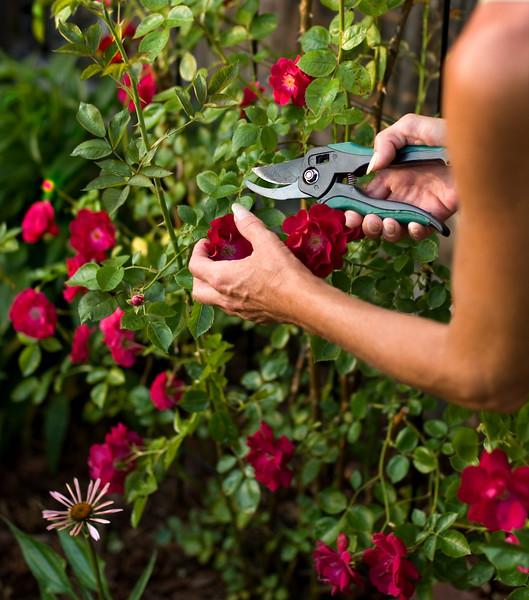 Here in the coastal region of Southern California with our warmer climate, we do not receive enough hours of cold to force our roses into dormancy naturally. It becomes necessary to prune our roses and strip off any remaining foliage to encourage a healthy new growth in the spring. This pruning also allows gardeners to take a look at how their rose bush is forming and make specific cuts to help shape and direct new growth so that the shrubs fit into gardens appropriately.
Here in the coastal region of Southern California with our warmer climate, we do not receive enough hours of cold to force our roses into dormancy naturally. It becomes necessary to prune our roses and strip off any remaining foliage to encourage a healthy new growth in the spring. This pruning also allows gardeners to take a look at how their rose bush is forming and make specific cuts to help shape and direct new growth so that the shrubs fit into gardens appropriately.
In the milder regions and coastal zones of Long Beach, roses are best pruned between the first part of January through February. Starting earlier may subject the new growth to possible early frost and result in damaging the bush. Pruning should be started by mid- January and finished by late-February. Once the higher temperature weather starts to warm the soil the bushes will begin to sprout new growth and should be in full flower by spring.
Think of your rose bushes’ end result as looking like a vase so that the canes radiate out in an open pattern with little growth left in the middle of the bush. Removing dead or diseased canes or branches should be your initial step in pruning. Branches that touch each other can spread disease and eventually kill the bush, so be sure to cut any canes that are touching or that cross through the center of your “vase”. This is also a good time to remove any old cane. The rule of thumb is to remove any cane three years or older for each new cane. So for every new growth, see if there is a three-year-old cane that can be removed. This will help keep your plant healthy and vital as well as help increase flower production. Next shorten back all remaining growth to approximately the third bud eye up from the bottom. Make sure this is an outward facing bud eye. The angled cuts should be made just above the outward facing bud eye to encourage the new growth toward the outside of the bush. Bud eyes can be found just above a node (leaf joint) on the stem. This is the point where new growth and flowers are produced. Removing all the leaves that remain will encourage the bush to go completely dormant and this also helps limit the spread of disease.
Some gardeners use a type of glue or sealant to protect the newly cut stems on the canes that the circumference is larger than a pencil. This is to prevent insects from laying eggs on the open wounds. When this happens, the larvae can cause serious damage and possible death of the infected cane. Some have found the easiest way to seal the cut is with Elmer’s School Glue. Although, many rose enthusiast in Long Beach find that these cane borers are not active during our pruning season and the canes heal naturally before the insect has the opportunity to lay her eggs, thus the need for sealing canes becomes unnecessary. Dapping each cane can be monotonous and time-consuming, so it remains a personal choice.
Now your roses are ready for the winter months and will bring you beautiful roses in the spring to enjoy!

